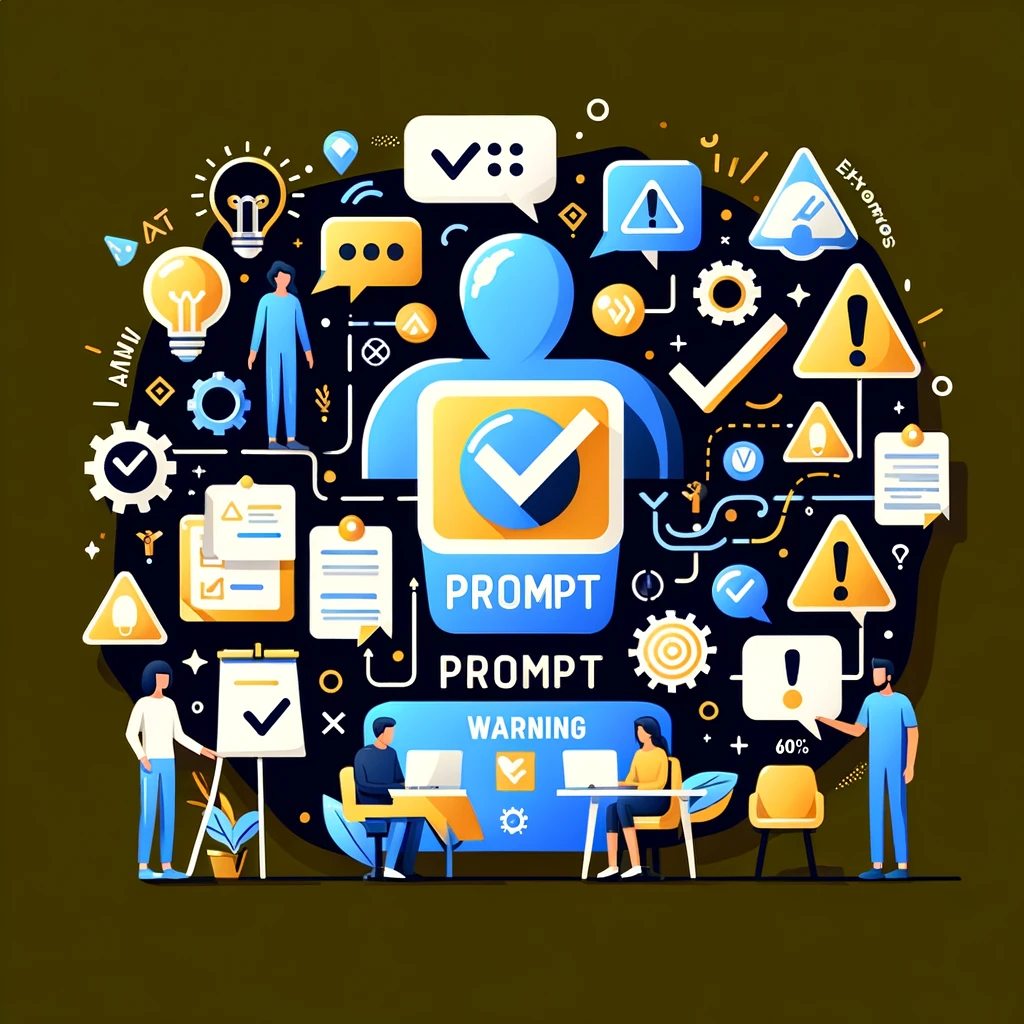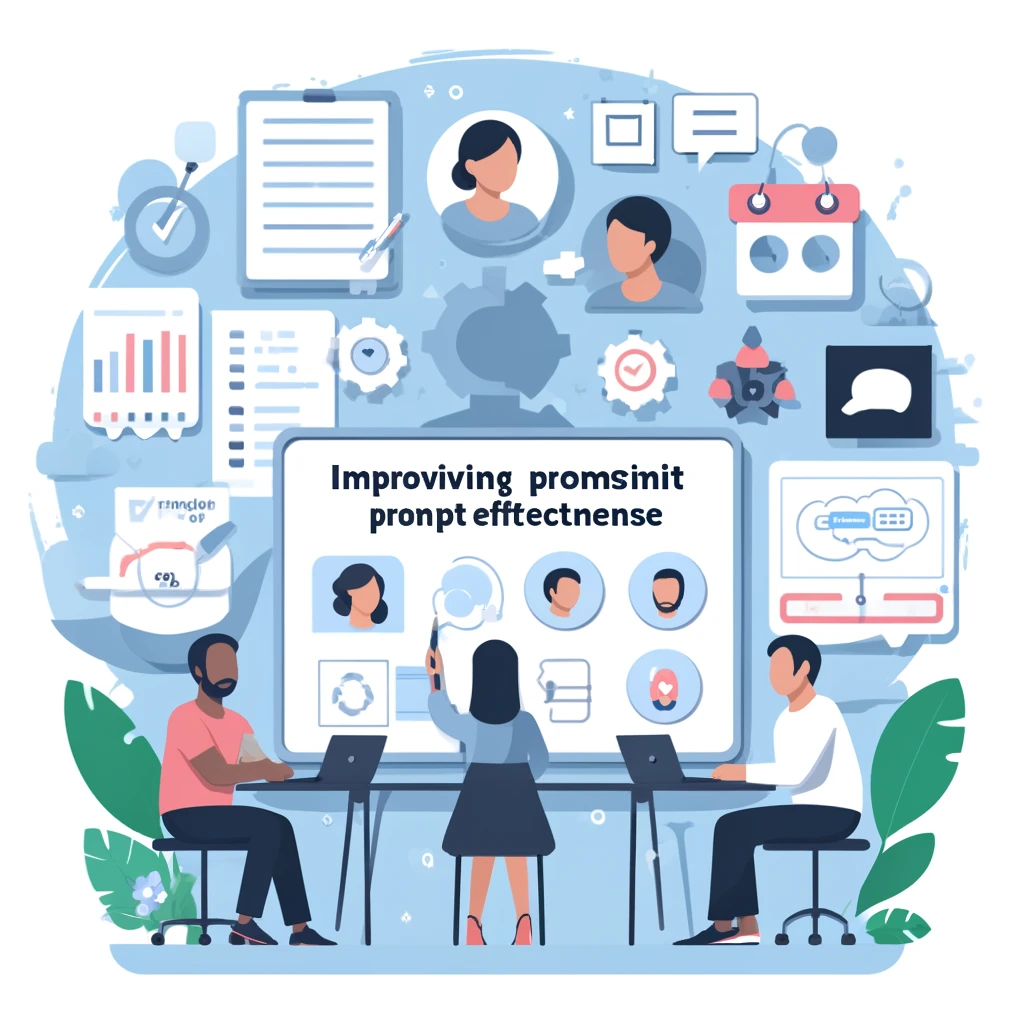
Common Pitfalls and How to Avoid Them
Let's talk about common pitfalls in prompt writing and how to avoid them. Knowing what to watch out for can save you a lot of time and frustration.
Introduction
Even experienced prompt engineers can fall into certain traps. Being aware of these pitfalls helps you avoid them and create more effective prompts. In this guide, we will explore some of the most common pitfalls in prompt writing and provide strategies to overcome them.
Common Pitfalls
Here are some common pitfalls and strategies to avoid them:
- Being Too Vague:
Vague prompts can lead to unclear or irrelevant AI responses. When the AI doesn't have enough information, it makes assumptions that may not align with your expectations.
Strategy to Avoid:
- Be Specific: Clearly state what you want the AI to do. Specify the scope, context, and desired outcome.
- Use Precise Language: Avoid generic terms. Instead, use precise words that convey exactly what you mean.
Examples:
Vague Prompt: "Tell me something interesting." Improved Prompt: "Share an interesting fact about the solar system." - Insufficient Context:
Without enough background information, the AI may not understand the request fully. Lack of context can result in responses that are off-target or incomplete.
Strategy to Avoid:
- Provide Adequate Context: Include necessary background information that helps the AI understand the request. Contextual details guide the AI to generate more relevant and accurate responses.
- Specify the Situation: Describe any relevant circumstances or settings that the AI needs to consider.
Examples:
Insufficient Context: "Describe the process." Improved Prompt: "Describe the process of photosynthesis in plants, including the roles of sunlight and chlorophyll." - Ambiguous Language:
Ambiguous or complex language can confuse the AI and lead to poor responses. Ambiguity occurs when a prompt can be interpreted in multiple ways.
Strategy to Avoid:
- Use Clear and Simple Language: Avoid using jargon, complex terms, or phrases that can be interpreted in more than one way. Clear and straightforward language helps the AI understand the request.
- Eliminate Ambiguity: Ensure that each term and instruction in your prompt has a single, clear meaning.
Examples:
Ambiguous Prompt: "What is the big deal about climate?" Improved Prompt: "Explain the major impacts of climate change on global weather patterns." - Overloading the Prompt:
Including too many instructions in a single prompt can overwhelm the AI. When a prompt is overloaded with information, the AI might struggle to determine which aspects to prioritize.
Strategy to Avoid:
- Break Down Complex Tasks: Divide the task into smaller, manageable parts and create separate prompts for each part.
- Focus on One Thing at a Time: Ensure each prompt addresses a single aspect of the task.
Examples:
Overloaded Prompt: "Explain the process of photosynthesis and how it impacts plant growth, and then describe how plants adapt to different environments." Improved Prompts: 1. "Explain the process of photosynthesis in plants." 2. "Describe how photosynthesis impacts plant growth." 3. "Explain how plants adapt to different environments." - Ignoring Feedback:
Not refining prompts based on previous AI responses can lead to repetitive mistakes. AI responses provide valuable feedback that can be used to improve prompt quality.
Strategy to Avoid:
- Use Feedback to Improve: Analyze the AI’s responses and adjust your prompts accordingly. Identify patterns in the AI’s mistakes and refine your prompts to address these issues.
- Iterate and Test: Continuously test and refine your prompts based on feedback to enhance their effectiveness.
Examples:
Initial Prompt: "Tell me about renewable energy." AI Response: "Renewable energy comes from natural sources that are constantly replenished." Refined Prompt: "List the different types of renewable energy sources and provide a brief description of each."
Interactive Exercise
Let’s correct some faulty prompts together. Here’s an example:
Faulty Prompt: "Explain it to me."
Improved Prompt: "Explain the process of photosynthesis in plants."
Share your solutions in the comments and see how others have improved them. Discuss the challenges you faced and the strategies you used to avoid common pitfalls. Here are more examples to practice with:
Faulty Prompt: "Give me some advice."
Improved Prompt: "Give me some advice on how to start a small business."
Faulty Prompt: "Write a story."
Improved Prompt: "Write a short story about a young detective solving a mystery in a small town."
Faulty Prompt: "Tell me about science."
Improved Prompt: "Tell me about the significance of the Higgs boson particle in physics."
Additional Strategies to Avoid Pitfalls
Here are some additional strategies to help you avoid common pitfalls in prompt writing:
- Review and Revise:
Always review your prompts before using them. Look for areas where you can add clarity and specificity. Reviewing your prompts helps identify potential ambiguities and areas where more detail is needed.
How to Review and Revise:
- Read Aloud: Read your prompt out loud to catch any awkward phrasing or unclear instructions.
- Check for Specificity: Ensure that the prompt clearly defines the task and includes all necessary details.
- Eliminate Ambiguity: Make sure that each term and instruction has a single, clear meaning.
- Test and Iterate:
Test your prompts with the AI and iterate based on the responses. Continuous testing and iteration help improve prompt effectiveness. By refining your prompts through iterative testing, you can enhance their clarity and relevance.
How to Test and Iterate:
- Initial Test: Use your prompt with the AI and evaluate the response for relevance and accuracy.
- Identify Issues: Note any parts of the response that are unclear, off-topic, or incorrect.
- Revise Prompt: Adjust the prompt to address the identified issues.
- Retest: Use the revised prompt with the AI and compare the new response to the initial one.
- Repeat: Continue refining and testing until the AI consistently generates accurate and relevant responses.
- Use Examples:
Providing examples within your prompts can help guide the AI to generate more accurate responses. Examples illustrate the expected outcome and clarify the prompt’s intent.
How to Use Examples:
- Include Clear Examples: Add examples that demonstrate the desired response. Ensure they are specific and relevant to the task.
- Explain the Example: Briefly explain why the example is a good response. This helps the AI understand the reasoning behind the example.
- Compare Examples: Provide both good and bad examples to highlight what to do and what to avoid.
Example:
Prompt: "Describe the impact of climate change." Example: "The melting of polar ice caps is a significant impact of climate change, leading to rising sea levels and habitat loss for polar species." - Seek Feedback:
Get feedback from peers or users on the quality of your prompts. Different perspectives can provide valuable insights for improvement. Feedback helps identify potential issues that you might not have noticed.
How to Seek Feedback:
- Peer Review: Share your prompts with colleagues or peers for review. Ask for specific feedback on clarity, relevance, and completeness.
- User Testing: Conduct user testing with your target audience to gather feedback on how they interpret and respond to the prompts.
- Iterative Feedback: Use feedback from initial tests to refine your prompts and then seek further feedback on the revised versions.
- Stay Updated:
Stay updated with the latest developments in AI and prompt engineering. New techniques and best practices can help you avoid common pitfalls and improve your prompt writing skills.
How to Stay Updated:
- Follow Industry News: Subscribe to AI and machine learning news sources to keep up with the latest trends and advancements.
- Join Professional Communities: Participate in AI and prompt engineering forums, webinars, and workshops to learn from experts and peers.
- Continual Learning: Take courses and read research papers on prompt engineering and AI to deepen your understanding and skills.
Conclusion
By avoiding these pitfalls, you can ensure your prompts are clear and effective. Practice makes perfect, so keep refining your prompts and learning from your mistakes. The more you practice, the better you’ll become at creating high-quality prompts. Remember, the goal is to communicate clearly with the AI to get the best possible responses.

Techniques for Improving Prompt Effectiveness
Learn techniques for improving the effectiveness of your prompts. Discover tips and examples to enhance your AI interactions and achieve better results.
View
Principles of Effective Prompt Writing
Discover the principles of effective prompt writing. Learn tips and strategies for creating clear, concise, and contextually relevant prompts for AI systems.
View


